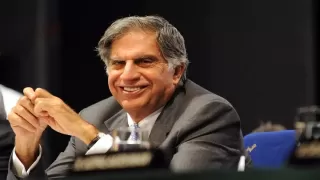In our fast-paced world, stress has unfortunately become a constant companion. Factors such as health issues, financial strain, and the relentless demands of modern life contribute significantly to our collective anxiety and tension. The addiction to social media and the pressure to maintain an idealized online persona only adds to these feelings, leading many to struggle with mood disorders, anxiety, palpitations, and depression.
Top 5 Yoga Exercises that release tension and promote positive mood
Surya Namaskara (Sun Salutation) and Chandra Namaskara (Moon Salutation)

Image Source: Twitter
Surya Namaskara (Sun Salutation): This sequence of 12 powerful yoga poses is designed to be performed in the morning to harness the energy of the rising sun. It includes a combination of forward bends, backward stretches, and salutations. The practice helps in improving flexibility, strengthening muscles, and boosting circulation. Each posture is synchronized with breath control, which enhances mindfulness and reduces stress. The Sun Salutation not only energizes the body but also prepares the mind for the challenges of the day ahead.
Chandra Namaskara (Moon Salutation): In contrast to the Sun Salutation, the Moon Salutation is a series of postures performed in the evening to calm and cool the body and mind. It consists of gentle stretches and bends that soothe the nervous system, reduce anxiety, and promote relaxation. The Moon Salutation balances the energy levels, making it an excellent practice before bedtime to ensure a restful sleep.
Sheetali Pranayama (Cooling Breath)

Image Source: Twitter
Sheetali Pranayama is a unique breathing technique aimed at cooling the body and calming the mind. The practice involves sitting comfortably with the spine erect, rolling the tongue into a tube shape, and inhaling through the mouth. The cool air passes over the tongue, reducing body temperature and alleviating stress. The exhalation is done through the nose. This pranayama is particularly effective during hot weather and for managing anger and anxiety. Regular practice can lead to a significant reduction in stress levels and an improvement in mental clarity.
Bhastrika Pranayama (Bellows Breath)

Image Source: Twitter
Bhastrika Pranayama is a vigorous and energizing breathing exercise. The practice involves rapid and forceful inhalations and exhalations through the nose. Each breath is accompanied by the movement of the diaphragm, creating a bellows-like effect. This pranayama increases the oxygen supply to the brain, revitalizes the nervous system, and releases pent-up emotions. It is excellent for those experiencing lethargy, depression, or mental fog. However, it is important to practice Bhastrika Pranayama under the guidance of a qualified instructor, especially for beginners, to avoid dizziness or hyperventilation.
Mudras (Hand Gestures)

Image Source: Twitter
Mudras are specific hand gestures that influence the flow of energy within the body. They can be performed while seated, during meditation, or even in everyday activities. Here are a few mudras that are particularly effective for stress relief:
Dhyan Mudra (Gesture of Meditation): This mudra involves placing the hands on the knees with the palms facing upwards and the tips of the thumbs touching the tips of the index fingers. This gesture helps calm the mind, improve concentration, and enhance meditation.
Gyan Mudra (Gesture of Knowledge): Similar to Dhyan Mudra, but with the hands resting on the thighs. It is known to stimulate the brain, reduce tension, and enhance cognitive abilities.
Prana Mudra (Gesture of Life): In this mudra, the tips of the thumbs touch the tips of the ring and little fingers, while the other fingers remain straight. Prana Mudra revitalizes energy levels, reduces fatigue, and promotes overall well-being.
Aarambh Dhyaan (Seed Meditation)

Image Source: Twitter
Aarambh Dhyaan is a grounding and centring meditation practice designed to release negative thoughts and cultivate a positive mindset. The practice involves sitting in a comfortable position with the spine erect, closing the eyes, and focusing on the breath. Visualize exhaling negative thoughts and energies as a black circle and inhaling positive, powerful thoughts as a white circle. This visualization helps clear the mind of clutter, reduce mental tension, and foster a sense of inner peace and tranquillity. Regular practice of Aarambh Dhyaan can lead to profound emotional stability and resilience.
Incorporating These Practices Into Daily Life
Incorporating these Yoga practices into a daily routine can provide immense relief from the stresses of modern life. Each practice addresses different aspects of physical and mental well-being, creating a holistic approach to managing stress. By dedicating a few minutes each day to Yoga, individuals can develop greater emotional resilience, mental clarity, and inner peace.
Yoga not only addresses the immediate symptoms of stress but also fosters long-term mindfulness and emotional balance. Through consistent practice, individuals can navigate life’s challenges with grace and equanimity, cultivating a more balanced and harmonious existence. Embracing Yoga as a tool for stress management and emotional health offers a powerful antidote to the pressures and tensions of contemporary living.
Also Read: Top 7 Places to Avoid Visiting in India During Monsoon 2024

































